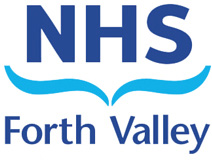Welcome to the Emergency Department
You will be part of a team in a busy Emergency Department, seeing adults and children from the Forth Valley region. The emergency department is divided into ‘trolleys’, ‘treatments’ and ‘resus’ and is located on the ground floor, next to the night/staff entrance to the hospital.
Key contacts
- Senior Charge Nurse – Glynis Fotheringham
- Secretary – Marion Nicol
- GP Champion – Dr Karyn Webster
- Clinical lead – Dr Stephen Feltbower
Sickness Reporting
In event of sickness please call the on duty emergency medicine consultant using Wi-Fi phone number.
Day to day
There are 2 handovers per day, the first at 8am and the second at the beginning of the night shift at 10pm. These take place in the seminar room and all patients in the department are briefly discussed.
After that, you will start seeing patients in either the trolleys or treatments area. Patients will have been triaged into categories (1 being most time critical, down to 5). If there are category 2’s or above to be seen, these patients are generally seen before others, then the rest tend to be seen in time order.
Each doctor in the emergency department will see their own patients. There are always helpful consultants to ask for advice if you are unsure how to manage a patient, and they are all approachable. Senior decision makers (consultants and senior registrars) are available 24 hours a day, please seek advice from within the department before referring to specialties.
Once assessed patients are either discharged or admitted under receiving teams – referrals for medicine and surgery are generally via the patient flow coordinator/call handler, this will be covered in more depth at induction.
Staffing & Rota
There are lots of different shifts in ED. As a result, staffing varies throughout the day, with the greatest number of staff being on shift in the afternoon, to reflect where a lot of the workload lies. The number of doctors varies between 4 (on night shift), to in excess of 10.
There is mixture of junior doctors, registrars and consultants. There are also Emergency Nurse Practitioners who see lots of the patients in the treatments area. The nurse in charge/co-ordinating nurse, should be kept updated with plans for patients, so that beds can be arranged for admission etc.
There are also a team of excellent nurses and auxiliaries, who are always happy to help.
The rota is busy and involves a mixture of day shifts (8-5), back shifts (1330-2230) and night shifts (2200-0815). You will work 2 in 3 weekends over the course of the block. Annual leave can be taken on certain weeks in your rota.
Useful Info
There is an emergency department handbook on the v drive of the computers, which is a large document with vast amounts of helpful information about how to manage common presentations to the ED, including specific management of certain fractures and the follow up required.
Every patient that comes through the department should have a discharge letter. This is the job of whoever sees the patient and we try to keep them succinct.
Education
There is departmental teaching every Thursday from 2-4pm and you will have the opportunity to attend this when you are on shift. The department also arrange in situ simulation and practical sessions which allow the opportunity to learn with the rest of the EM team
Opportunities include:
- Suturing skills
- Fascia iliaca blocks
- Procedural skills (splints, chest drain insertion etc.)
- Management of critically unwell & trauma patients as part of resus team
- Resuscitation management
- Range of medical, surgical and paediatric presentations


